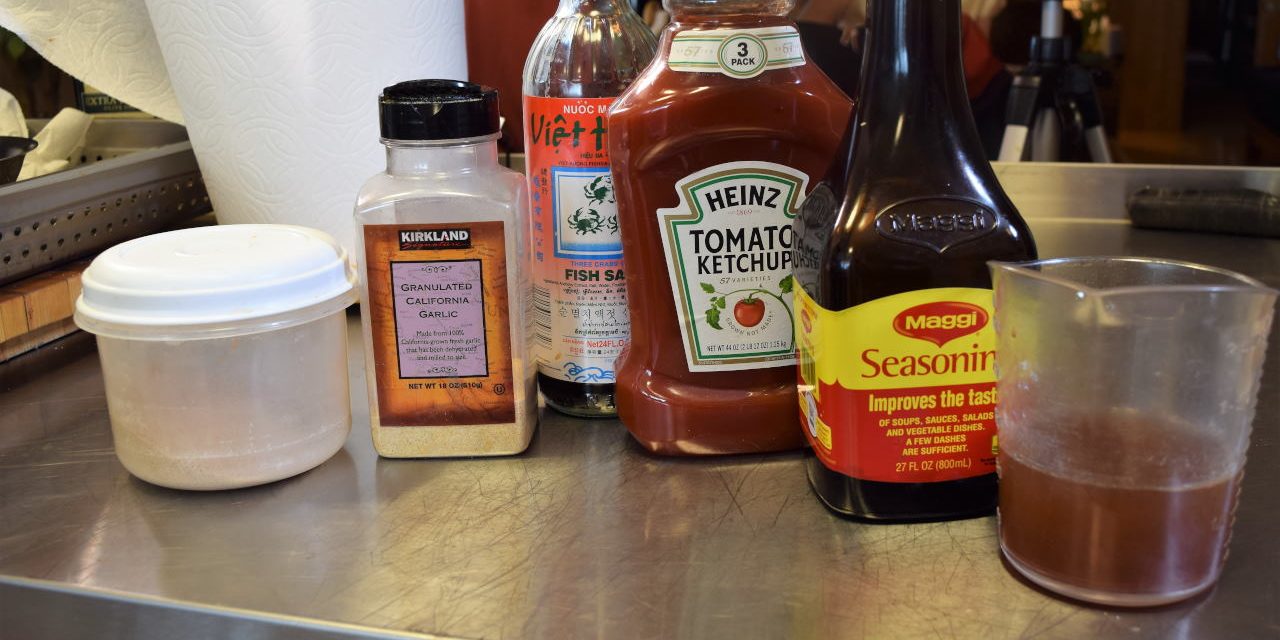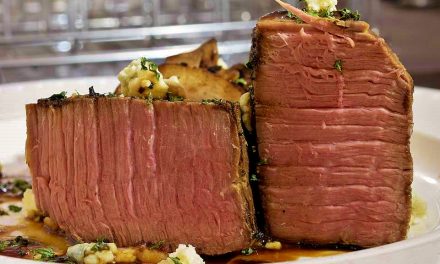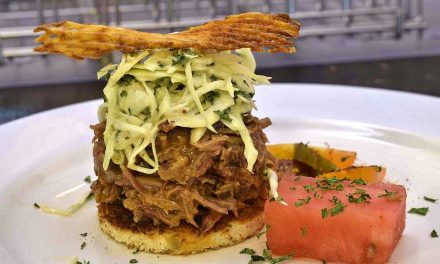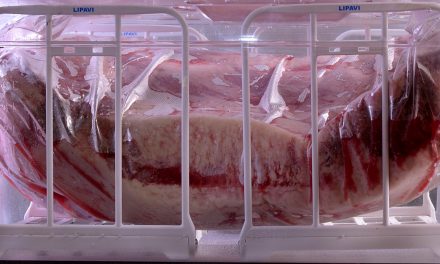Wait. WOOT? Wow!
Now that sous vide has buzz around it, many commonly held beliefs have been reduced to idealistic, romantic notions. We are answering questions about food characteristics that were never asked until recently. Many of us never thought of food as even HAVING characteristics. People feel threatened when you challenge their views about something so personal and intimate as food. That’s like attacking someone’s mother; doubly so, because most of us associate Mom with food and vice versa.
For Example:
According to the scientific evidence, meat/muscle cannot be penetrated by any flavorings other than sodium ions, usually delivered in the form of salt. Salt is not actually a FLAVONOID, and flavonoids are not the only things that contribute flavor. Flavonoids themselves are an entire class of molecules that share common chemical characteristics–for example, they all have 15 carbon atoms. They are much larger than sodium ions and are way too big to penetrate meat’s tangled matrix of complex proteins.
This is a hard one to accept. It goes against our lifelong unquestioned assumptions. The manufacturers of vacuum equipment products and sous vide devices strongly encourage us to believe otherwise. Many chefs are loathe to admit that those rosemary sprigs, garlic cloves and butter pats in the bag are just there for show–if they even know. After all, flavor penetration/infusion is an important component of their sales model.
Not So Fast, Buster.
There is an unscientific but very powerful reason why the infusion fallacy lingers even now. Our senses seem to contradict it. Notice I said SENSES, as in plural. The detection of flavor involves two different sensory organs. That’s right–our mouths, and our NOSES.
We are all highly aware of the signals we receive from these amazing devices. Unfortunately, we tend to lump them together. Depending on how you conduct your poll, you can demonstrate not only that most people don’t distinguish between taste and smell, they never even really thought about it.
When you open your sous vide bag that you so eagerly incorporated with fresh rosemary and a garlic clove, you will definitely smell rosemary and garlic. There is no argument there. Even though vegetables need 183F/84C to denature, the smell is present.
There’s Still No Way Around It.
Of course, those smells were also there when you smashed that garlic clove to peel it, and when you opened the little bag of rosemary that you got at the store. You just weren’t planning to eat them at that moment, so you didn’t really react.
Next time you process a steak via sous vide, open the bag when it’s done and crush a Bay leaf in your hand. I guarantee you that you will smell Bay leaf now, and even taste it in/on the steak. In spite of the fact that there was no Bay leaf in the bag. And here’s WHY.
Our sense of smell is activated before our sense of taste; frequently even before our sense of sight. Once your sense of smell has been activated, your sense of taste is going to tag along. Game over. The mouth will take the nose’s word for almost anything. I know, very ironic. Your nose talks, and your mouth listens. Who would have thunk it?
So Much for Shakespearean Roses.
Anyone who has ever had a cold knows how dependent we are on our noses to enjoy or even TASTE what we’re eating or drinking. Our noses cannot tell if a particular flavor penetrated the surface of a piece of meat, either. How could they? Everything is all mixed together. We don’t smell in layers. Would that we could!
We can’t tell by looking if a flavor penetrated the surface of a piece of meat, either. Flavonoids are colorless. They are, however, frequently accompanied by natural dyes. Darn.
Our palates are left with the awesome task of detecting whether flavor penetrated the surface of that piece of chicken or pot roast. Frankly, the insides of our mouths are not designed to detect just where ANY flavor originated. Our mouths are like flexible blenders.
Measuring infusion/penetration in our mouths is like running a bunch of stuff through a meat grinder and then trying to figure out what’s what and where it started. Once the food enters the mouth, the evidence quickly gets well jumbled up, figuratively and literally.
And Another Thing.
Without being able to list them, most people will acknowledge that salty, sweet, sour, and bitter are the four primary flavors. Umami, that sort of indefinable characteristic associated with a variety of foods has also become identifiable to a lot of people.
But most people don’t realize that salt has no smell. Bacon smells great, right? Smoky, porky, fragrant. But bacon doesn’t smell salty, even though it is. Heck, that’s the main reason we like it! And when we smell bacon, most of us salivate, anticipating that saltiness. It’s hard to turn that off, even for chefs. The brain is not only an amazing thing, it is a very deceptive thing.
That’s not sugar you smell, either. That’s vanilla, or another aroma that our brains have been trained to associate with sweetness. Don’t believe me? Go ahead, take a good long whiff of the sugar bowl. That “sweet” smell of certain flowers is just our noses/brains identifying flavonoids that are typically associated with sweetness. With salt, and without sugar, vanilla tastes pretty weird.
Acidity and Bitterness
There are flavonoids in sour foods, like lemon juice and vinegar, and there are flavonoids in bitter foods, too, like coffee and citrus zest. But acidity and bitterness are not flavonoid dependent. A lemon does not really smell sour, even though vinegar seems to. I would not describe the aroma of coffee as bitter. Acidity and bitterness are better described as “sensations” in our mouths, and somewhat less so to our noses.
Some people believe that acidity can be used to tenderize meat. Yes and no. High acidity can have an effect on proteins. From the outside in. It doesn’t really penetrate it. Or tenderize it. It DISSOLVES it. Drat.
Umami.
Simply put, umami/glutamate has no smell. Period. Darn.
In Closing.
Flavor is a subjective thing and people are not eager to change their sensibilities about it. Doing so smacks of abandoning our fondest memories, apple pie, bacon, as I mentioned, and the smell of a BBQ. Smoke has flavonoids in it–syringol and guaiacol provide aroma and flavor, respectively. Again, they cannot penetrate the protein matrix, although some components of smoke are as small as .04 microns, so they can. Not only small enough to penetrate muscle, but small enough to go right through it and small enough to penetrate your sous vide bag and make the water in your tank look like tea.
Surface treatments can be very effective. Applying them after sous vide processing is not as cool looking or even as convenient, but it’s much more efficient. Even if all the spices in the bag DID penetrate, they wouldn’t cook. Uncooked spices smell pretty good, but they don’t taste that great. Another distinction between smell and taste that many of us never even considered. Raw garlic smells one way. It tastes quite different. Doesn’t it? Extra Virgin Olive Oil in the bag sounds good, but it doesn’t taste that great afterwards. Some people describe the taste after processing as metallic or even blood-like. Ick. What a waste of EVOO. Heating it up increases its fragile low acidity, by the way.
Here is an excellent ARTICLE from the AmazingRibs website providing supportive documentation.





